Biography
Sigmund Freud - Austrian psychoanalyst, psychiatrist and neurologist. Founder of psychoanalysis. Suggested innovative ideas that cause resonance in scientific circles even today.
Sigmund Freud was born in the city of Freiberg (now - PrSEIBOR, Czech Republic) on May 6, 1856, becoming a third child in the family. Sigmund's mother - the second wife of Jacob Freud, who had already two sons from the first marriage. Trade of fabrics brought the profit by the family, which was enough for life. But the rolled revolution was extincting even such a small undertaking against the background of other ideas, and the family had to leave the native home. At first, Freud's family moved to Leipzig, and a year later in Vienna.
Poor area, dirt, noise and unpleasant neighbors are those reasons that did not create a positive atmosphere in the house of the future scientist. Sigmund himself did not like to remember early childhood, counting those years unworthy of their own attention.
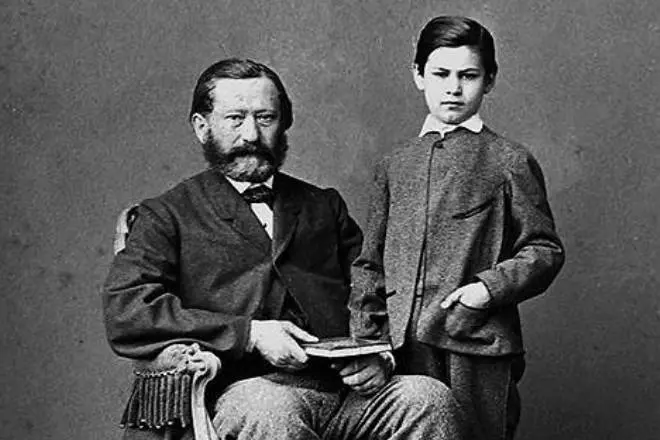
Parents loved her son very much, laying great hopes on him. The passion for literature and philosophical works was only encouraged. And read Sigmund Freud is not childish serious literature. In the personal library of the boy, the honorable place was occupied by Shakespeare, Kant, Nietzsche and Hegel. In addition, psychoanalyst was fond of studying foreign languages, and even a complex Latin was given to a young sentence.
Studying in the home environment allowed the boy to enter the gymnasium earlier than was supposed. In school years, Sigmund has created conditions for the unimpeded fulfillment of tasks in different subjects. Such love of parents was fully justified, and Freud's gymnasium finished successfully.
After school, Sigmund spent many days alone, reflecting on his future. Strict and unfair laws were not given such a large selection of Jewish boy: medicine, jurisprudence, commerce and industry. All options, except for the first, Sigmund dropped immediately, considering unsuitable for such an educated person. But Freud did not experience much interest in Medicine. In the end, the future founder of psychoanalysis stopped the choice on this science, and psychology will become the basis in the study of various theories.
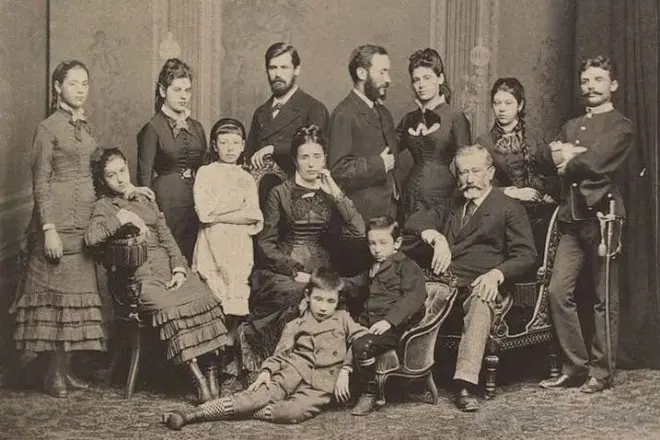
The lecture was the impetus for the final decision, at which the work was read by Goethe called Nature. Medicine The future philosopher studied without familiar zeal and interest. Staying in student years in the laboratory of Tricks, Freud published interesting and informative articles about the nervous system of some animals.
After graduating from studying, Sigmund planned to continue the academic career, but the surrounding situation required the ability to make a living. Therefore, having worked for several years under the start of some well-known therapists of the time, in 1885 Sigmund Freud filed an application for the opening of his own Cabinet of neuropathology. Thanks to the recommendations, the scientist received permission.
It is known that Sigmund also tried cocaine. The action of the drug struck the philosopher, and he wrote a large number of works, in which revealed the properties of a destructive powder. One of the closest friends of Freud as a result of cocaine treatment, but the enthusiastic researcher of the secrets of human consciousness did not pay due attention to this fact. In the end, Sigmund Freud and himself suffered from cocaine addiction. After many years and the mass of the efforts, the professor nevertheless hesitated from a detrimental habit. All this time, Freud did not leave classes in philosophy, visiting various lectures and leading their own entries.
Psychotherapy and psychoanalysis
In 1885, thanks to the support of friends, influential laminated medicine, Sigmund Freud came to an internship to the French psychiatrist Jean Charco. Practice opened his eyes to the future psychoanalyst on the difference between diseases. Sharcot Freud has learned to apply hypnosis in treating, with which he managed to cure patients or alleviate suffering.
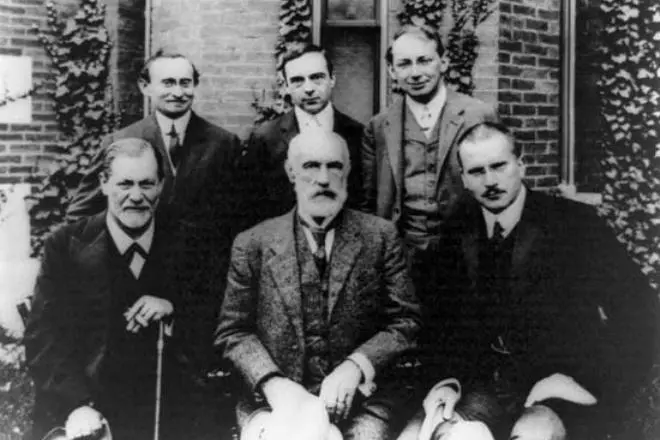
Sigmund Freud began to apply in the treatment of conversation with patients, allowing people to speak out, change consciousness. This technique acquired the name "Method of Free Associations". These conversations from random thoughts and phrases helped an insightful psychiatrist to understand the problems of patients and find a solution. The method helped abandon the use of hypnosis and pushed to communicate with patients in full and pure consciousness.
Freud presented the world that any psychosis is the consequence of human memories, which are difficult to get rid of. At the same time, the scientist brought the theory that most psychosis are based on an emergency complex and infantile children's sexuality. Sexuality, as Freud believed, this is the factor that determines a large number of human psychological problems. "Three essays on the theory of sexuality" complemented the opinion of the scientist. Such a statement on the basis of structured work caused scandals and disagreements between Freud's psychiatra colleagues speaking against the theory. Representatives of the scientific community said that Sigmund is nonsense, and he himself, as experts assumed, became a victim of psychosis.
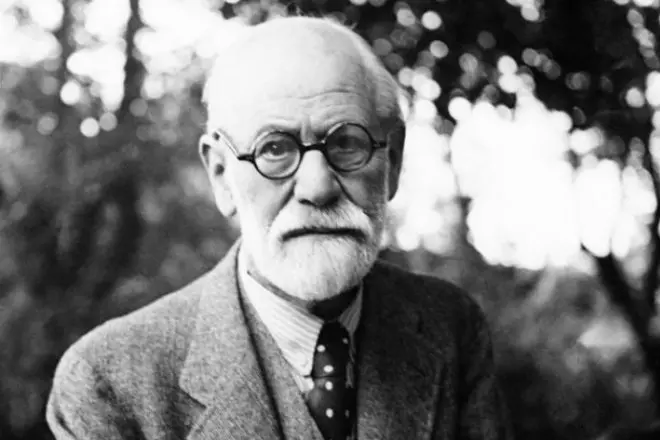
The entry into the light of the book "Interpretation of dreams" at first did not bring due recognition to the author, but later psychoanalysts and psychiatrists recognized the significance of dreams in the treatment of patients. As a scientist believed, a dream is a significant factor of influence on the physiological state of the human body. After the release of the book of Professor Freud was invited to lecture at the universities in Germany and the United States, which the representative of medicine himself considered a great achievement.
"The psychopathology of everyday life" is another work of Freud. This book is considered the second job after the "interpretation of dreams", which influenced the creation of a topological model of the psyche developed by the scientist.
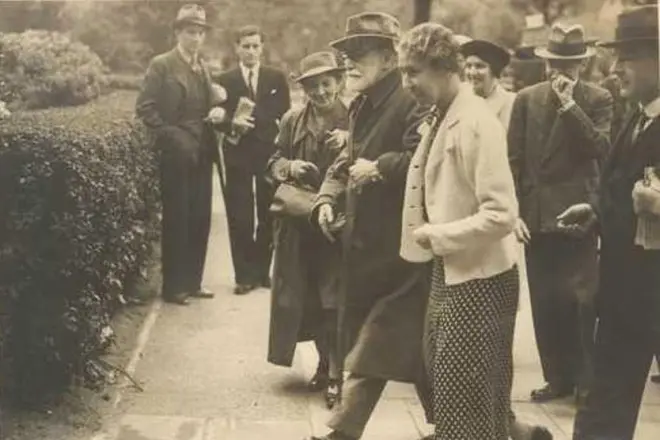
The book "Introduction to Psychoanalysis" took a special place among the works of the scientist. This paper contains the core of the concept, ways to interpret theoretical principles and methods of psychoanalysis, as well as the philosophy of the author's thinking. In the future, the basics of philosophy will be the basis for creating a set of mental processes and phenomena that received a new definition - "unconscious."
Tried Freud to explain and social phenomena. In the book "Psychology of Mass and Human Analysis, I", psychoanalyst reasoned the factors that influence the crowd, the behavior of the leader, the "prestige" resulting as a result of the stay in power. All these books of the author still - bestsellers.
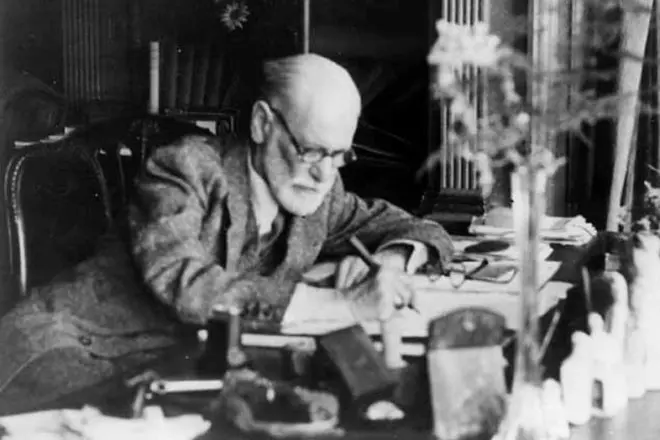
In 1910, there was a split in the ranks of students and followers of Freud. Disagreement of students with the fact that psychosis and hysteria are associated with the suppression of the sexual energy of a person (Freud adhered to such the theory) - the cause of contradictions that led to the split. Disagreements and reset tired the great psychiatrist. Psychoanalyst decided to gather around himself only those who adhered the basics of his theory. So, in 1913, a secretive and almost secret community "Committee" appeared.
Personal life
The decades of Sigmund Freud did not pay attention to the female floor. Frankly, the scientist feared women. This fact caused a lot of jokes and overwhelms, which confused psychiatrist. Freud convinced himself that all his life could do without the intervention of women in a personal space. But the circumstances have developed so that the great scientist amenable to the influence of the charm of the beautiful floor.
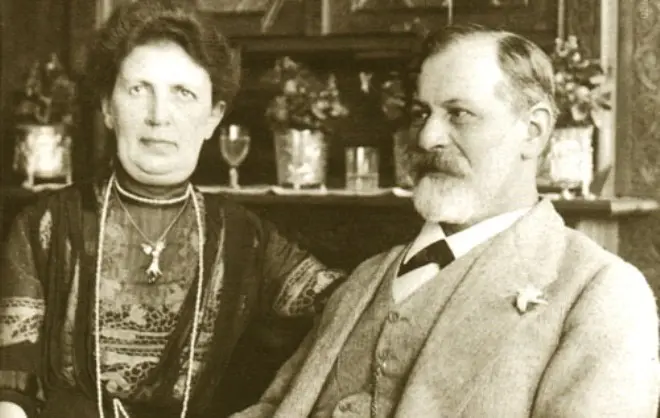
Once on the way to the printing house, Freud almost fell under the wheels of the carriage. The passenger, regretting the incident, as a sign of reconciliation sent a scientist invitation to the ball. Already at the event, Sigmund Freud met his future wife Martha Beyrneis, as well as her sister Mine. After some time, a lush engagement took place, and after and the wedding. A married life was frozen often scandals, jealous of March insisted that the husband interrupt communication with Mine. Not wanting to swear with his wife, Freud did it.
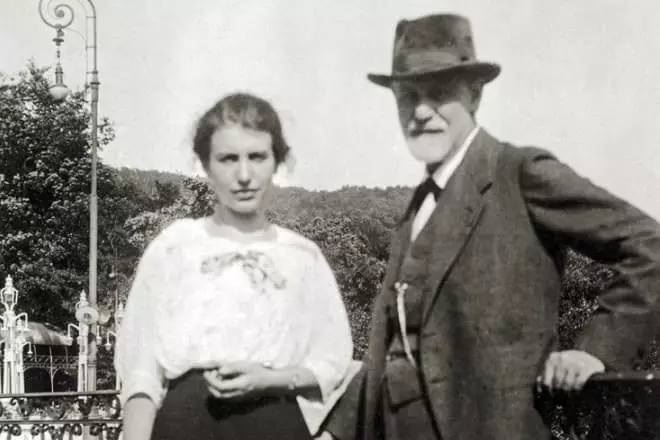
For 8 years of family life, Marta gave her husband six children. After the birth of the youngest daughter, Anna Sigmund Freud decided to completely renounce sex life. Judging by the fact that Anna became the last child, the Great Psychoanalyst kept the word. It was the younger daughter who cared for Freud at sunset of a scientist's life. In addition, Anna is the only one of the children who continued the work of the famous Father. The names of Anna Freud named Children's psychotherapeutic center in London.
Interesting Facts
The biography of Freud's Sigmund is full of interesting stories.
- It is known that psychoanalyst was afraid of numbers 6 and 2. The scientist was never strengthened in hotels in which more than 61 rooms were listed. Thus, Freud avoided hitting the "Hell's room" under the number "62". In addition, under any pretext on February 6, Austrian did not go outside, afraid of negative events, which, as the scientist assumed, was expected on this day.
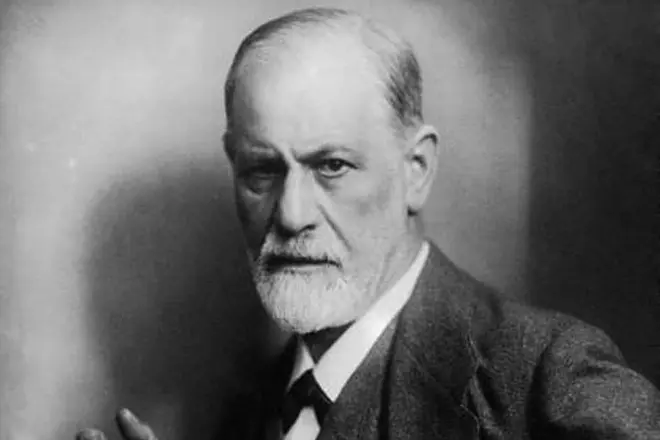
- Freud listened only to himself, considering his own opinion the only true and correct. The scientist demanded that those who listened to the speeches extremely carefully. Surely, not one theory of the scientist is associated with these moments, and such requirements for other psychoanalyst tried to prove superiority, satisfying his pride.
- The phenomenal memory of the psychiatrist is another mysterious moment in the biography of the Austrian doctor. A scientist since childhood remembered the content of books, notes and pictures that he liked. Such abilities helped Freud in learning languages. The famous Austrian except German knew a large number of other languages.
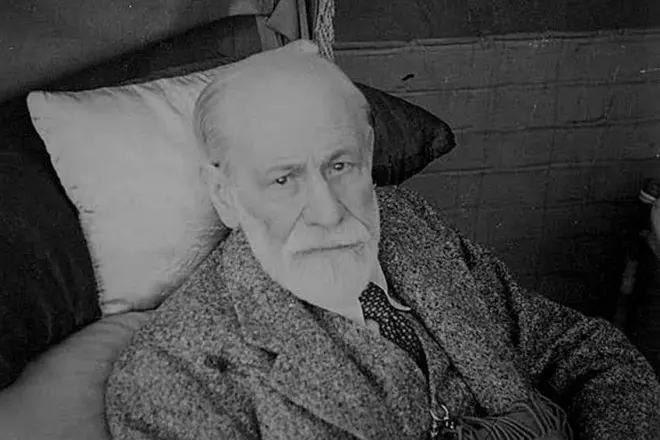
- Sigmund Freud never watched people into the eyes. This feature clearly noticed the surrounding people who met the physician during life. The scientist avoided the views, so representatives of the scientific community assume that the famous couch appeared in the psychoanalyst room is associated with this moment.
Death
Strengthened learning medical and philosophical works, the intense routine of the day and the work of the thinker left a heavy imprint on the health of Sigmund Freud. Austrian psychoanalyst fell ill with cancer.
A large number of operations and not having received the desired result, Freud asked the attending physician to provide a service and help die, getting rid of Muk. In September 1939, Dose Morphia interrupted the life of a scientist, betraying the body of the blue.
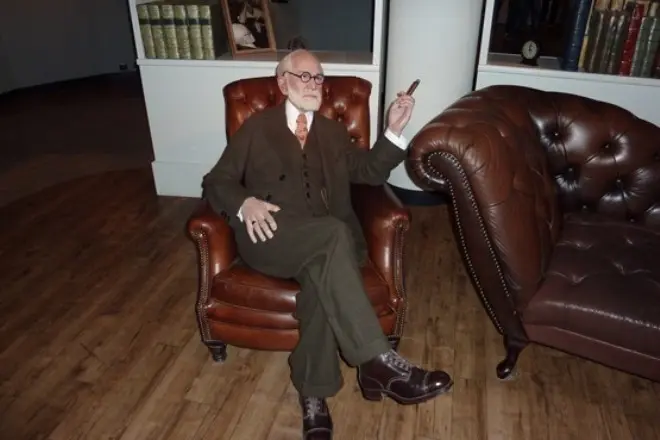
In honor of Freud, a large number of museums have been created. The main thing is the institution organized in London, in a building where the scientist lived after forced emigration from Vienna. Also, the Museum and Memory Hall of the Zigmund Freud is located in the city of Prtedip (Czech Republic), on the homeland of the scientist. The photo of the founder of psychoanalysis is often found at the events of the international level dedicated to psychology.
Quotes
- "Love and work is the cornerstone of our humanity."
- "The task of making a person was not happy in the plan of the creation of the world."
- "The voice of intelligence quiet, but it does not get tired of repeating - and the listeners are located."
- "You do not cease to look for strength and confidence internally, but to look in yourself. They were always there. "
- "In general, a number of cases, love is nothing but a mental capture of an object dictated by sexual primary urges in order to direct sexual satisfaction and with achieving this goal and fuse; This is what is called lowlands, sensual love. But, as you know, the libidinal situation rarely remains so simple. Confidence in the new awakening just faded need was probably the closest motive, why the capture of the sexual object turned out to be long and "loved" and in those intervals when the attraction was absent. "
- "Just today my deceased daughter would have turned thirty-six years ... We find a place for the one who lost. Although we know that acute sorrow after such a loss will erase, however, we will remain uncomfortable and we will never be able to find a replacement. All that becomes an empty place, even if it is able to fill it out, remains something else. So it should be. This is the only way to extend the love from which we do not want to renounce. " - From Letter Ludwig Binswanger, April 12, 1929.
Bibliography
- Interpretation of dreams
- Three essays on the theory of sexuality
- Totem and taboo
- Psychology of the masses and analysis of the human "I"
- The future of one illusion
- On the other side of the principle of pleasure
- I and it
- Introduction to psychoanalysis
